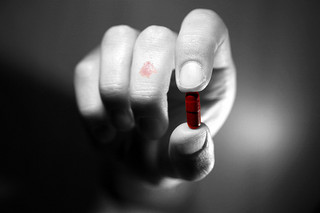
Question:
What are the maximum doses of potassium, calcium, phosphorus, and magnesium that can be taken orally without significant adverse effect and with maximum clinical effect?
口服鉀、鈣、磷、鎂的建議最大有效劑量(沒有明顯副作用)是多少呢?
Response from Jenny A. Van Amburgh, PharmD, CDE
Assistant Dean of Academic Affairs and Associate Clinical Professor, School of Pharmacy, Northeastern University; Director, Clinical Pharmacy Team and Residency Program Director, Harbor Health Services, Inc., Boston, Massachusetts
Electrolytes are essential for maintaining many of the homeostatic and metabolic functions of the body. In clinical situations such as dehydration, diabetic ketoacidosis, and renal disease, patients may require supplementation of lost electrolytes. Too much or too little of electrolytes such as magnesium, potassium, phosphate, and calcium can be problematic; knowing how to appropriately replace them is an important component of patient care.
Magnesium
It is estimated that less than 50% of Americans obtain adequate amounts of magnesium via their diet. Unfortunately, many practitioners are hesitant to prescribe oral magnesium preparations due to the known side effect of diarrhea. The recommended daily dose of elemental magnesium is 400 mg per day, and a single dose of 800-1600 mg is necessary to produce this laxative effect. Giving magnesium in a sustained-release preparation not only helps to prevent abrupt elevations in plasma concentrations but also minimizes the likelihood of a patient experiencing this side effect.[1,2]
Phosphorus
Similar to magnesium, oral phosphate preparations have the dose-limiting side effect of diarrhea, which is often avoidable. The recommended daily intake for adults is 800-1200 mg of elemental phosphorus. Commonly used oral phosphate supplements contain 250 mg and are typically given 3-4 times a day. Dividing the dose throughout the day may decrease the likelihood of a patient experiencing diarrhea. Another way to obtain phosphate without the gastrointestinal (GI) side effects associated with the oral supplements is to eat a high-phosphorus diet including, eggs, nuts, fish, and milk.[3-5]
Potassium
Potassium loss is usually caused by gastrointestinal or urinary losses associated with vomiting, diarrhea, or the use of diuretics. Oral replacement is commonly given over a period of days or weeks to fully correct the losses. Several liquid preparations and slow-release tablets are available. The liquid formulations are less expensive, but patients may report an unpleasant taste and do not tolerate them well. The slow-release tablets are well tolerated but have been associated with vomiting, ulceration, and bleeding in the GI tract. To reduce the risk for these side effects, oral potassium extended-release tablets should be given in doses of no more than 20 mEq multiple times a day to achieve the recommended daily intake for adults of 40-100 mEq per day.[4,6-7]
Calcium
About 43% of the US population uses calcium supplements. The majority are women over the age of 50 who take them for the prevention or treatment of osteoporosis. Adults should consume a total of 1000-1200 mg per day of elemental calcium (from diet and supplements) in divided doses of ≤ 500 mg per dose to increase absorption. Taking more than the recommended calcium intake can cause constipation. However, calcium citrate supplements appear to cause fewer GI side effects compared with calcium carbonate.[8-10]
Oral electrolyte supplementation can be an effective and safe way for patients to regain balance. Supplements do carry dose-limiting side effects; therefore, it is important to monitor patients to ensure that they are receiving appropriate doses.
The author wishes to acknowledge the assistance of PGY1 residents Phillipa Scheele, PharmD; Jacqueline M. Kraft, PharmD; and Ngoc Diem Nguyen PharmD; and Michael P. Conley, PharmD, and Nga T. Pham, PharmD, CDE, AE-C, Assistant Clinical Professors at Northeastern University, School of Pharmacy and Harbor Health Services, Inc., Boston, Massachusetts.
References
- Fine KD, Stanta Ana CA, Porter GL, Fordtran JS. Intestinal absorption of magnesium from food and supplements. J Clin Invest. 1991;88:396-402. Abstract
- Gums JG. Magnesium in cardiovascular and other disorders. Am J Health Syst Pharm. 2004;61:1569-1576.Abstract
- Kraft MD, Btaiche IF, Sacks GS, Kudsk KA. Treatment of electrolyte disorders in adult patients in the intensive care unit. Am J Health Syst Pharm. 2005;62:1663-1682. Abstract
- Astle SM. Restoring electrolyte balance. RN. 2005;68:34-40.
- Standing Committee on the Scientific Evaluation of Dietary Reference Intakes, Food and Nutrition Board, Institute of Medicine. DRI dietary reference intakes for calcium, phosphorus, magnesium, vitamin D, and fluoride. Washington, DC: The National Academies Press; 1997:71-287.
- Strom BL, Carson JL, Schinnar R, et al. Upper gastrointestinal tract bleeding from oral potassium chloride. Comparative risk from microencapsulated vs wax-matrix formulations. Arch Intern Med. 1987; 147:954-957.Abstract
- Gennari FJ. Hypokalemia. N Engl J Med. 1998;339:451-458. Abstract
- Cooper MS, Gittoes NJ. Diagnosis and management of hypocalcaemia. BMJ. 2008;336:1298-1302. Abstract
- Nordin BE, Daly RM, Horowitz J, Metcalfe AV. Calcium and heart attacks. Making too much of a weak case. BMJ. 2010;341:c4997.
- Committee to Review Dietary Reference Intakes for Vitamin D and Calcium; Institute of Medicine. Dietary reference intakes for calcium and vitamin D. Washington, DC: The National Academies Press; 2011:35-74.





 留言列表
留言列表
 線上藥物查詢
線上藥物查詢 